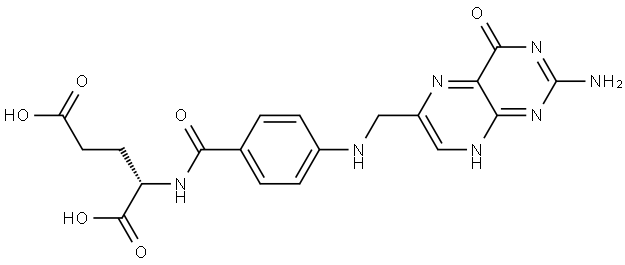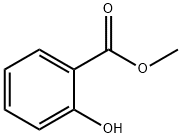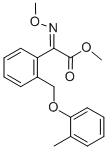Gibberellic acid
Synonym(s):GA3;Gibberellic acid;Gibberellin A3
- CAS NO.:77-06-5
- Empirical Formula: C19H22O6
- Molecular Weight: 346.38
- MDL number: MFCD00079329
- EINECS: 201-001-0
- SAFETY DATA SHEET (SDS)
- Update Date: 2025-02-14 19:37:11

What is Gibberellic acid?
Description
Gibberellic acid (GA) is a tetracyclic di-terpenoid compound. It is one of the major hormones that can be synthesized in plants and fungi. It has various kinds of physiological effects including stimulating seed germination, inducing mitotic division of the leaves, triggering transitions from meristem to shoot growth, vegetative to flowering, determining sex expression and grain development through crosstalk with many environmental signals such as light, temperature and water. In lab and greenhouse, it can be used to trigger germination of seeds which has previously remained dormant. It can also used to induce the production of larger amount and bigger grapes, boosting the grape industry. In industry, GA can be produced from Solid-state Fermentation (SSF) which can have relatively high yield.
Chemical properties
white powder
The Uses of Gibberellic acid
Gibberellic Acid is a a pentacyclic diterpene acid. Gibberellic Acid is a hormone that is found in plants which promotes the growth and elongation of cells. Gibberellic acid acts as a plant growth reg ulator on account of its physiological and morphological effects in extremely low concentrations. Generally Gibberellic acid affects only the plant parts above the soil surface.
The Uses of Gibberellic acid
Gibberellic acid is used as a plant growth hormone. It is also used to trigger germination in dormant seeds in laboratory and green house settings and to stimulate rapid stem and root growth and induce mitotic division in the leaves of some plants. It also serves in grape growing industry as a hormone to induce the production of larger bundles and bigger grape.
What are the applications of Application
Gibberellic acid is an important plant growth hormone
Definition
ChEBI: A C19-gibberellin that is a pentacyclic diterpenoid responsible for promoting growth and elongation of cells in plants.
Biosynthesis
The presence of GA in actively growing tissues, i.e., shoot apices, young leaves, and flowers. Gibberellins (GAs; Gibberellic acids) being synthesized via the terpenoid pathway, require 3 enzymes viz., terpene synthase (TPSs), cytochrome P450 monooxygenase (P450s) and 2-oxoglutarate dependent dehydrogenase (2 ODDs), for the biosynthesis of bioactive GA from geranylgeranyl diphosphate in plants. Two terpene synthases, ent-copalyl diphosphate synthase (CPS) and ent-kaurene synthase (KS), located in plastids, are involved in the conversion of GGDP to tetracyclic hydrocarbon intermediate ent-kaurene. ent-Kaurene is then converted to GA12 by 2 P450s. First, ent-Kaurene oxidase (KO), present in the plastid's outer membrane, catalyzes the sequential oxidation of C-19 to produce ent-kaurenoic acid. Second, the kaurenoic acid oxidase (KAO) in the endoplasmic reticulum is converted to GA12. Bioactive GA4 is converted from GA12 through oxidations on C-20 and C-3 by GA 20-oxidase (GA20ox) and GA 3-oxidase (GA3ox)[3].
General Description
White powder.
Air & Water Reactions
Slightly water soluble .
Reactivity Profile
Gibberellic acid is readily degraded by acids. .
Fire Hazard
Flash point data for Gibberellic acid are not available. Gibberellic acid is probably combustible.
Agricultural Uses
Plant growth hormone, Plant regulator: Gibberellic acids (Gibberellins) are naturally occurring plant hormones that are used as plant growth regulators to stimulate both cell division and elongation that affects leaves and stems. Applications of this hormone also hastens plant maturation and seed germination. Delayed harvesting of fruits, allowing them to grow larger. Gibberellic acids are applied to growing field crops, small fruits, grapes, vines and tree fruit, and ornamentals, shrubs and vines.
Agricultural Uses
Gibberellic acid is an organic acid used as a plant growth hormone. It is formed by the fungus Gibberellafujikuroi in aerated submerged culture.
Agricultural Uses
Gibberellin is a growth promoting substance found widely in plants. It was first isolated from the fungus Gibberella. Gibberellin increases the rate of photosynthesis and helps in the elongation of cells. It promotes the flowering and germination of plants. With a general formula of Cl9H22O6, gibberellins are also produced by Azotobacter, Azospirillum, etc.
Trade name
ACTIVOL®; BERELEX®; BRELLIN®; BOLL-SET®; CEKUGIB®; CROP BOOSTER®; CYTOPLEX HMS®, DYNOGEN®; FALGRO®; FLORALTONE® (with 2,3,5-triiodobenzoic acid); FLORGIB®; FOLI-ZYME®; GIBBEX®; GIBBERELLIN A 3 ®; GIBBERELLIN X®; GIBBREL®; GIBGRO®; GIB-SOL®; GIB-TABS®; GIBRESCOL®; GROCEL®; KALGIBB®; MAXON®; N-LARGE®; NOVAGIB®; PGR-IV®; PRO-GIBB®; REGULEX®; RELEASE®; RELAX®; RYZUP®; STIMULATE®; VIGOR®
Biochem/physiol Actions
Phytohormone that controls important aspects of plant growth: germination, elongation, and flowering. The effects are mediated by inducing degradation of the DELLA repressor protein, and probably other minor signalling pathways.
Safety Profile
Mildly toxic by ingestion. Questionable carcinogen with experimental tumorigenic data. hlutation data reported. When heated to decomposition it emits acrid smoke and irritating fumes.
Purification Methods
It crystallises from EtOAc, EtOAc/pet ether, MeOH/pet ether or Me2CO/pet ether. [Cross J Chem Soc 3022 1960, Beilstein 18 III/IV 6533.]
Toxicity evaluation
75 ppm of Gibberellic acid (GA3) in drinking water was continuously administered orally to rats (Sprague-Dawley albino) ad libitum for 50 days. The lipid peroxidation end product MDA significantly increased in the lungs, heart, and kidney of rats treated with GA3 without significant change in the spleen. Antioxidant enzyme activities such as SOD significantly increased in the lungs and stomach and decreased in the spleen and heart tissues of rats treated with GA3[4].
References
[1]https://en.wikipedia.org/wiki/Gibberellic_acid
[2]https://www.ncbi.nlm.nih.gov/pmc/articles/PMC4002599/
[3] Gupta, Ramwant, and S K Chakrabarty. “Gibberellic acid in plant: still a mystery unresolved.” Plant signaling & behavior vol. 8,9 (2013): e25504. doi:10.4161/psb.25504
[4]Celik, Ismail et al. “Evalution of toxicity of abcisic acid and gibberellic acid in rats: 50 days drinking water study.” Journal of enzyme inhibition and medicinal chemistry vol. 22,2 (2007): 219-26. doi:10.1080/14756360600988955
Properties of Gibberellic acid
| Melting point: | 227 °C |
| Boiling point: | 401.12°C (rough estimate) |
| alpha | 82.5 º (c=10, ethanol) |
| Density | 1.34 g/cm3 (20℃) |
| refractive index | 81 ° (C=2, MeOH) |
| storage temp. | 0-6°C |
| solubility | 5g/l |
| form | Powder |
| pka | 4.0(at 25℃) |
| color | White to pale yellow |
| optical activity | [α]20/D +80±3°, c = 1% in methanol |
| Water Solubility | 5 g/L (20 º C) |
| Merck | 14,4419 |
| BRN | 54346 |
| Stability: | Stable. Combustible. Incompatible with acids, strong oxidizing agents. |
| CAS DataBase Reference | 77-06-5 |
| NIST Chemistry Reference | Gibberellic acid(77-06-5) |
| EPA Substance Registry System | Gibberellic acid (77-06-5) |
Safety information for Gibberellic acid
| Signal word | Warning |
| Pictogram(s) |
 Exclamation Mark Irritant GHS07 |
| GHS Hazard Statements |
H319:Serious eye damage/eye irritation |
| Precautionary Statement Codes |
P264:Wash hands thoroughly after handling. P264:Wash skin thouroughly after handling. P305+P351+P338:IF IN EYES: Rinse cautiously with water for several minutes. Remove contact lenses, if present and easy to do. Continuerinsing. P337+P313:IF eye irritation persists: Get medical advice/attention. |
Computed Descriptors for Gibberellic acid
| InChIKey | IXORZMNAPKEEDV-OBDJNFEBSA-N |
Gibberellic acid manufacturer
New Products
1-Boc-4-cyanopiperidine tert-Butyl carbazate 1-(TERT-BUTOXYCARBONYL)-2-PYRROLIDINONE TETRABUTYLAMMONIUM CYANIDE TETRAHYDRO-2H-PYRAN-3-OL 3-Pyridineacrylic acid Nickel(II) perchlorate hexahydrate, 98% 4-Bromophenylacetonitrile, 95% 3-Bromo-4-fluoroaniline, 97% Sodium tetraborate decahydrate, 98% Palladium(II) acetate, trimer, Pd 99% 4-Bromo-2-chlorotoluene, 97% Tadalafil Clopidogrel bisulfate Sitagliptin Phosphate Monohydrate Cabergoline Fexofinadine HCl Etoricoxib 4-Amino Acetophenone 2-Chloro Acetophenone Amlodipine Base 2,3,5-Triiodobenzoic Acid Pyrrolidine Diiodo PentoxideRelated products of tetrahydrofuran








You may like
-
 Gibberellic Acid (GA3) for tissue culture CAS 77-06-5View Details
Gibberellic Acid (GA3) for tissue culture CAS 77-06-5View Details
77-06-5 -
 Gibberellic Acid (GA3) CAS 77-06-5View Details
Gibberellic Acid (GA3) CAS 77-06-5View Details
77-06-5 -
 Gibberellic Acid (GA3) CAS 77-06-5View Details
Gibberellic Acid (GA3) CAS 77-06-5View Details
77-06-5 -
 Gibberellic acid CAS 77-06-5View Details
Gibberellic acid CAS 77-06-5View Details
77-06-5 -
 Gibberlic Acid CAS 77-06-5View Details
Gibberlic Acid CAS 77-06-5View Details
77-06-5 -
 Gibberellin A3 CAS 77-06-5View Details
Gibberellin A3 CAS 77-06-5View Details
77-06-5 -
 Gibberellic Acid (GA3) for tissue culture CAS 77-06-5View Details
Gibberellic Acid (GA3) for tissue culture CAS 77-06-5View Details
77-06-5 -
 Gibberellin CASView Details
Gibberellin CASView Details
